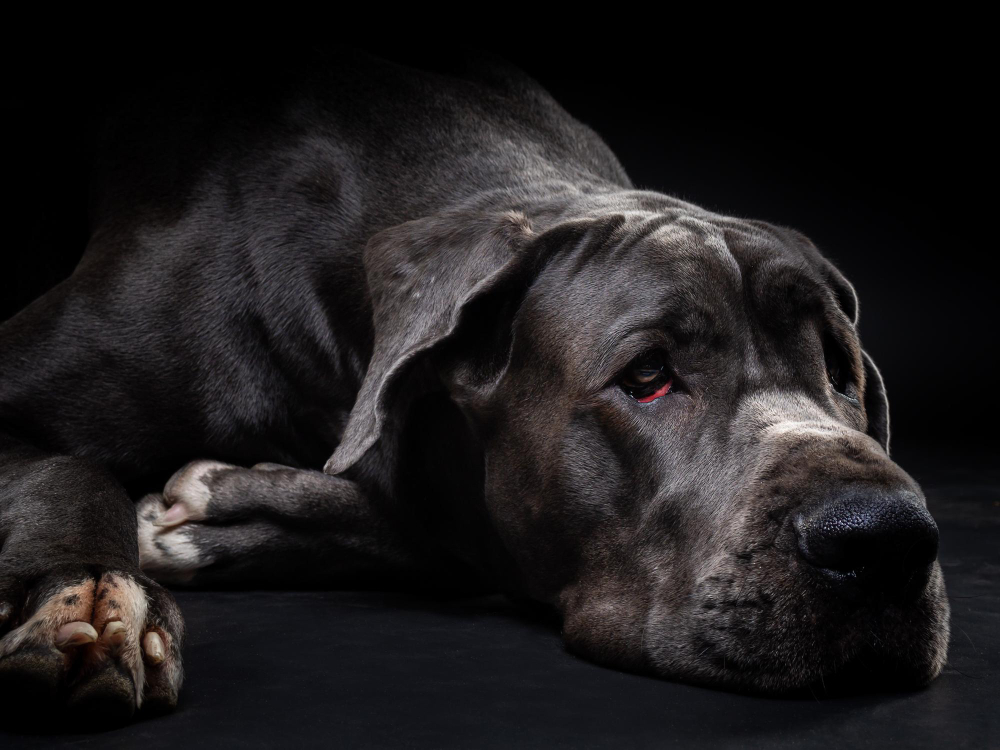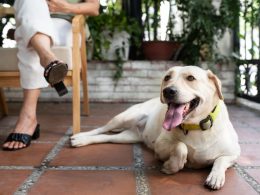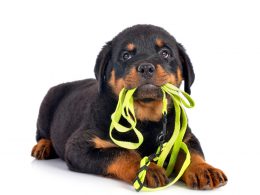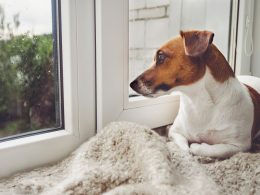The Great Dane is quite resistant, but gastrointestinal problems, especially gastric torsion, are common. Have you noticed that your dog often evacuates with soft and smelly stools? He certainly has diarrhea. This article will explain everything about diarrhea and what to provide as food in these cases.
Acute vs Chronic: Differentiating the Types of Dog Diarrhea
Several reasons can cause diarrhea in a dog, including psychological problems such as anxiety and depression. In cases of frequent diarrhea, it may be related to an infection, disease, or worm. Diarrhea consists of an increase in the volume of defecation with more water, and it may contain mucus, blood, fat, or undigested food. The most common causes include gastrointestinal disorders and food allergies.
Diarrhea can be classified as acute when it lasts less than 48 hours, and the dogs have a lack of appetite and greater frequency and urgency of defecation, and chronic, when it lasts about ten days and the dog, becomes very weak.
Don’t Ignore Your Dog’s Poop: Understanding the Signs of Diarrhea
It is essential always to watch your dog’s poop. In milder cases, such as changing food, diarrhea is usually more voluminous and causes a lot of flatulence. When it comes to worms, mainly linked to giardia, the feces have egg-white mucus with a very characteristic smell. When it comes to intoxication, the shape and aroma can be different, as different parts of the intestine can be affected. Cases caused by food allergies are more specific and require follow-up with specialists in pet nutrition!
The time of the clinical condition will also depend on the type of diarrhea. For example, the discomforts usually last a maximum of 48 hours in cases of changing food. As a result, worms such as giardia will only stop with specific treatment.
Beware: Dehydration is the Main Risk of Canine Diarrhea
The main risk of diarrhea is dehydration which can lead to severe organ damage and even death. When they are puppies, attention must be redoubled, as they become dehydrated quickly, and they are more vulnerable than adult dogs. If you observe vomiting and diarrhea, take them to the vet immediately. As for adult dogs, you should be aware in case the symptoms increase or are prolonged. If any worsening happens, take him to the vet.
The Right Food for Diarrhea-Prone Dogs: Understanding Essential Fatty Acids
Some dogs are more prone to diarrhea due to genetic factors. And for these dogs, do you know the best food to be provided to reduce and control diarrhea cases? You must have thought that foods be fats. But this is not ideal, as dogs require certain fats called essential fatty acids. So you know what to do?
You can read in several places that the ideal is to provide rice with chicken and vegetables, but DON’T DO IT! You will be harming your dog even more, as you will be providing food that he is not used to eating and will unbalance the entire intestinal microbiome, causing more discomfort. The idea is to maintain the diet that the dog is already used to, whether dry food, wet food, or natural food, stimulate hydration, and provide probiotics.
You can stimulate hydration in the following ways:
- Adding warm water to the food at the time of supply;
- On cold days you can make snacks from frozen food;
- Provide coconut water, but attention should not replace water.
- Changing food is usually one of the most common factors that cause diarrhea in dogs.
Did you know that food exchange from one feed to another should be gradual? Were you surprised? Check out how the change should be done correctly and avoid diarrhea in your dog:
- On the first day of the change, give him 75% of the food he is used to eating + 25% of the new food. Stay this way until the second day.
- Give 50% of each ration on the third day and remain until the fourth day.
- On the fifth day, give 75% of the new feed + 25% of the old feed, and keep it until the sixth day.
- You can feed 100% of the new feed on the seventh day.
This procedure involves adapting your dog’s intestinal flora to the new food. But why is this necessary? Unlike us, dogs are adept at mono-diet. They eat the same food every day, so their intestinal microbiota is vulnerable when there is an abrupt change of food, causing gastrointestinal discomfort, especially diarrhea.
In the case of diarrhea in Great Dane dogs, the procedures must be the same!
Firm Up Your Dog’s Stools with These Fiber-Rich Snacks
Usually, take a while for the stools to be firm, but you can provide fiber as a snack to help the gastrointestinal tract. Know some snacks that you can use, but pay ATTENTION to only an amount that does not exceed 10% of what your dog is already eating normally.
- Cooked carrots: carrots have fibers that help in the formation of fecal cake and also regulate peristaltic movements of the intestine;
- Fruits like apples, bananas, and pears provide fiber and are great for replacing electrolytes.
- Psyllium Powder can attract and retain water, thus regulating the intestines faster. But do not exaggerate the dosage; provide only one teaspoon with food.
Avoiding Diarrhea in Dogs: Tips for a Healthy & Balanced Diet
There are some ways to prevent diarrhea, the most important is to keep vaccination and to deworm up to date, in addition to annual check-ups to assess health as a whole. When walking your dog, don’t let it eat any objects or food. It is essential to maintain a balanced diet that does not have sudden changes and seek help from a specialist in pet nutrition.
It is essential to point out that medicines should never be given without authorization from a veterinarian! If in doubt, contact a professional specializing in pet nutrition!














